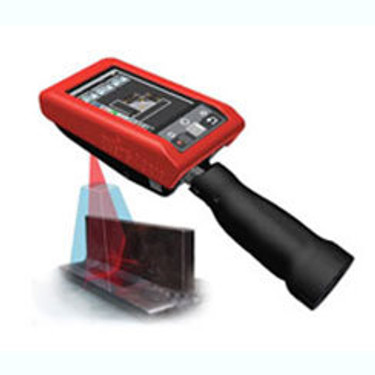Exploring the Various Approaches and Criteria of Welding Assessment for Achieving Conformity and Reliability in Design Applications
The importance of welding examination in engineering applications can not be overstated, as it acts as a crucial secure for making sure structural integrity and conformity with market criteria. Numerous approaches, including visual examination and advanced non-destructive screening techniques, provide crucial insights right into the quality of welds. Adherence to established governing standards such as those from AWS and ASME establishes a structure for accountability and quality. Nevertheless, the landscape of welding inspection is continually evolving, triggering a more detailed assessment of arising techniques and their implications for engineering reliability. What might these growths entail for future jobs?
Significance of Welding Examination
Welding inspection plays an important role in ensuring the integrity and safety of bonded frameworks. The importance of welding examination can not be overstated, as it offers as a protect against prospective failures that can result from poor welding methods.
In addition, welding examination is essential for maintaining top quality assurance throughout the welding process. It guarantees that the welds satisfy the essential mechanical and physical homes required for their designated applications. Routine inspections likewise promote a culture of accountability and constant enhancement within welding procedures, motivating adherence to best practices and industry requirements.
In controlled industries such as aerospace, manufacturing, and building and construction, strict welding examination procedures are mandated to adhere to legal and safety and security demands. Inevitably, efficient welding examination not just safeguards human life and property yet also improves the durability and reliability of bonded structures, making it an essential facet of design and construction.

Typical Welding Examination Techniques
A range of assessment techniques are used to assess the quality and honesty of welds, each tailored to identify particular kinds of defects. Amongst the most common methods is aesthetic inspection, which involves an extensive examination of the weld surface to determine noticeable flaws such as fractures, damages, and inadequate blend. This approach is usually the very first step in the examination process due to its simplicity and cost-effectiveness.
One more commonly used technique is radiographic assessment, where X-rays or gamma rays permeate the weld to reveal interior issues. This strategy is especially effective for identifying porosity and additions within the weld product. Likewise, ultrasonic testing employs high-frequency audio waves to identify interior problems, giving a detailed analysis of the weld's honesty.
Moreover, magnetic fragment examination is made use of for ferromagnetic materials, permitting for the discovery of surface area and near-surface flaws by using electromagnetic fields and observing particle patterns. Lastly, dye penetrant testing includes using a liquid color to the weld surface, disclosing splits and various other gaps upon evaluation. Each of these approaches plays a vital function in guaranteeing weld high quality and compliance with sector criteria
Non-Destructive Testing Techniques
Non-destructive screening (NDT) techniques are necessary tools in the assessment of weld top quality, enabling examiners to assess the stability of bonded joints without creating damage to the products. Different NDT approaches are used to recognize possible problems, ensuring that welds satisfy the required criteria for safety and efficiency.
One of the most prevalent methods is ultrasonic screening (UT), which utilizes high-frequency audio waves to discover internal problems such as spaces or fractures. Radiographic screening (RT) utilizes X-rays or gamma rays to create photos of welds, revealing any kind of interruptions within the product. Magnetic fragment screening (MT) is efficient for detecting surface and near-surface issues in ferromagnetic materials via the application of electromagnetic fields and contrasting particles.
Fluid penetrant testing (PT) is another extensively used method that involves applying a dye to the surface area of the weld, which leaks into any type of splits, making them visible under ultraviolet light. Each of these methods provides unique advantages and restrictions, and the option of an appropriate technique is essential to attaining accurate assessments of weld honesty. Ultimately, the execution of NDT methods substantially contributes to the dependability and security of engineering applications.

Governing Specifications and Conformity
In the world of welding inspection, adherence to regulative standards and conformity is extremely important to make sure the safety and reliability of welded structures (Welding Inspection Milwaukee). Numerous organizations, consisting of the American Welding Society (AWS), the American Culture of Mechanical Designers (ASME), and the International Organization for Standardization (ISO), have established standards that govern welding techniques and inspection procedures. These standards give a structure for quality control, detailing the required credentials for examiners and the techniques for examining weld stability
Compliance with these regulatory standards not just boosts the architectural honesty of bonded assemblies but additionally reduces risks connected with failures, which can have disastrous effects. Inspections should be carried out using like this defined procedures, including aesthetic, ultrasonic, and radiographic methods, to guarantee that welds fulfill specified requirements.
Moreover, adherence to these requirements is commonly needed by law, specifically in sectors such as production, aerospace, and construction. Regular audits and qualifications are vital to preserve conformity, therefore promoting a society of safety and quality within companies. Inevitably, governing standards and conformity offer as the foundation of trustworthy welding inspection techniques, making sure that crafted structures meet both efficiency assumptions and security requirements.
Finest Practices for Welding Inspection
While maintaining conformity with regulative requirements is essential, executing finest practices for welding inspection better boosts the safety and stability of bonded frameworks. Effective welding examination begins with comprehensive planning, which includes comprehending the details demands of each job and making certain examiners are well-trained in relevant techniques and criteria.
Using a detailed evaluation list assists to make sure all vital facets are assessed, such as weld size, penetration, and visual defects. Non-destructive screening (NDT) methods, such as ultrasonic or radiographic testing, ought to be employed where ideal, supplying a more thorough analysis of weld quality without endangering the honesty of the materials.
Documents plays a considerable role in ideal techniques; maintaining exact documents of evaluations, consisting of pictures, examination results, and conformity reports, ensures responsibility and facilitates future evaluations. Additionally, fostering a society of open interaction in between welders and examiners can lead to early recognition of possible problems, promoting instant restorative activities.
Final Thought
In recap, the these details implementation of strenuous welding assessment methods and adherence to established criteria are necessary for guaranteeing conformity and reliability in design applications - Welding Inspection Milwaukee. Strategies such as visual examination, radiographic screening, and ultrasonic screening work as critical devices in keeping and determining issues quality control. By cultivating a society of liability and quality, companies can boost the stability and longevity of welded frameworks, eventually adding to the safety and security and efficiency of design jobs
Different approaches, including visual examination and advanced non-destructive screening methods, supply essential understandings right into the high quality of welds.Welding assessment plays an essential role in ensuring the honesty and safety and security of welded this article frameworks.A selection of evaluation techniques are used to analyze the quality and stability of welds, each tailored to find certain types of flaws.One more commonly used approach is radiographic evaluation, where X-rays or gamma rays penetrate the weld to expose inner issues.In the world of welding inspection, adherence to regulative criteria and conformity is paramount to guarantee the safety and security and dependability of welded frameworks.